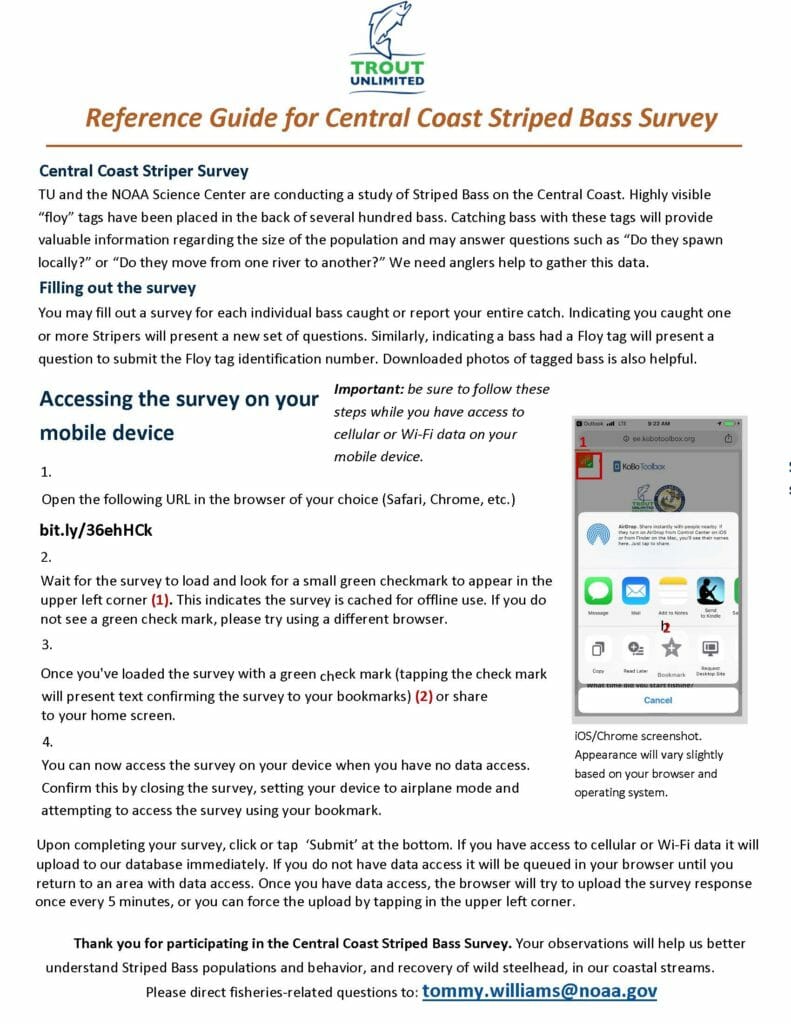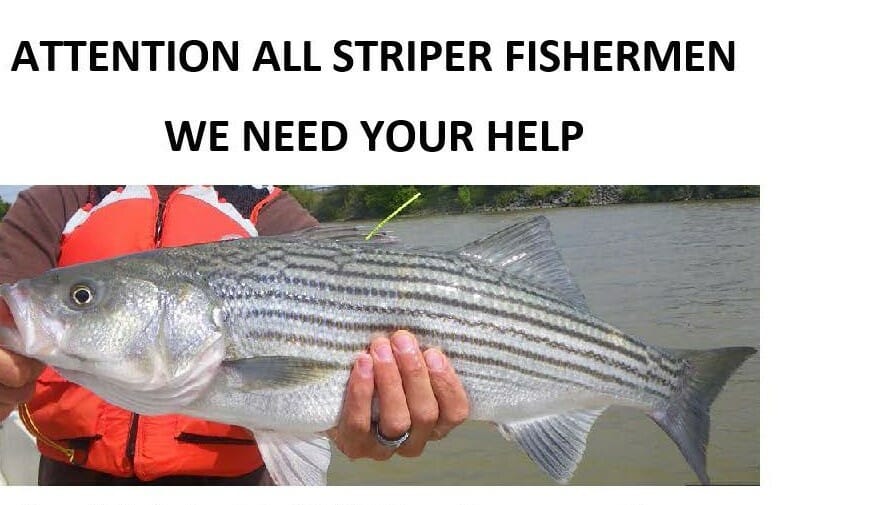By Tim Frahm
California’s central coast once produced a lot of wild steelhead. Steelhead were a staple food for the labor force that built some of the state’s famed Spanish missions over 200 years ago.
Today, however, central coastal steelhead are threatened. Trout Unlimited, through our Golden Gate and Steinbeck Country chapters, is working with state and federal agencies to recover them.
One way TU is providing support for this effort is through a novel program created in partnership with the NOAA Fisheries’ Southwest Science Center in Santa Cruz. This program aims to better understand the relationship between striped bass and steelhead in this region through collection of angler catch data.

Striped bass frequently move in and out of central coast river lagoons and even upstream reaches and compete with steelhead for habitat and food. In addition, predation by striped bass on juvenile steelhead may affect some steelhead populations.
The new program invites anglers who catch striped bass in rivers such as the San Lorenzo, Salinas, Carmel and Pajaro (or on the beaches between them) to upload their catch data through a smart phone app created just for this purpose. More than 200 striped bass in this area have been tagged by NOAA scientists.
Catching bass with these tags will provide valuable information regarding the size of the population and may answer questions such as “Do they spawn locally?” and “Do they move from one river to another?”
Recording any striped bass catch, tagged or not, is important data and will enhance this analysis. Anglers also can record any steelhead they may catch (the winter steelhead season here runs from December 1 to March 7 and is catch-and-release only).
TU is committed to science-based coldwater fisheries management, and invests heavily across the country in advancing and supporting that science. We have relied on science to help deliver major conservation “wins” for steelhead in this region such as the removal of San Clemente Dam and the acquisition of a 36-hole golf course that is now protected as a regional park and whose irrigation water is now kept instream — both on the Carmel River.
Sometimes, anglers can contribute directly to the progression of such science. Like good weather windows during steelhead season, we should take advantage of that opportunity on the central California coast this winter.
Contact Tim Frahm, TU’s Central Coast Steelhead Coordinator, with any questions about the striped bass survey program (tfrahm@tu.org).



